Popcorn ceilings were once popular for their noise reduction and concealment, but are now considered outdated and difficult to clean. Their removal can be messy and time-consuming, and some may contain asbestos. Popcorn ceilings can reduce resale value and may have asbestos-related health problems. Solutions include removing the texture or covering it, but if asbestos is present, professional help is needed.
Are you thinking about buying a house with a popcorn ceiling? Although this style of textured ceiling was popular in the mid-20th century, it has since fallen out of favor due to its dated appearance. However, before making a decision, it is important to weigh all the pros and cons of this feature. In this article, we’ll explore the pros and cons of popcorn ceilings, discuss the challenges of removing and updating them, analyze how they can affect your home’s resale value, address potential health concerns, and offer alternative solutions to this unique design choice. . By the end of this article, you will have a better understanding of whether buying a house with a popcorn ceiling is the right decision for you.
- 1. Pros and cons of popcorn ceilings: should you buy a house with this feature?
- 2. Renovation Challenges: Removing and updating the popcorn ceiling in your new home
- 3. Popcorn and Home Value: How It Can Affect Resale Value
- 4. Health Concerns: Potential Risks and Tips for Popcorn Ceiling Maintenance
- 5. Alternatives and Solutions: Exploring Popcorn Ceiling Options in Your Dream Home
1. Pros and cons of popcorn ceilings: should you buy a house with this feature?
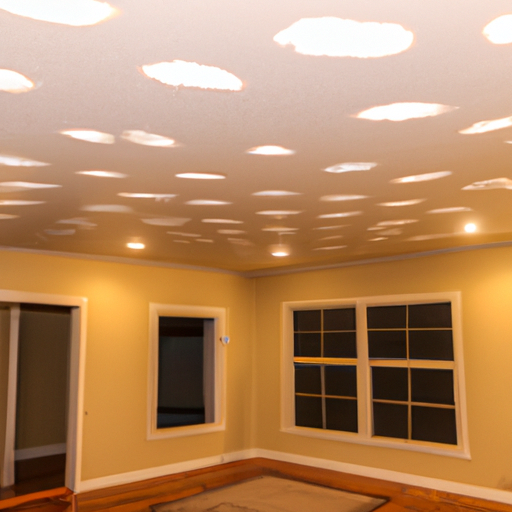
Popcorn ceilings, also known as acoustic or textured ceilings, were once a popular choice in the mid-20th century due to their noise-reducing properties and ability to hide imperfections. However, the perception of them has changed over time, and many homeowners now consider them outdated and unattractive. If you’re considering buying a house with a popcorn ceiling, it’s important to weigh the pros and cons before making a decision.
One of the main advantages of popcorn ceilings is their ability to reduce noise. The texture helps absorb sound waves, making the room quieter and more peaceful. This can be especially helpful if you live in a noisy neighborhood or have a lot of activity in your home. In addition, popcorn ceilings can hide imperfections, such as cracks or uneven surfaces, which can be expensive and time-consuming to fix.
On the other hand, there are several disadvantages of popcorn ceilings that should be taken into account. One of the most common complaints is that they are difficult to clean. Textured surface
2. Renovation Challenges: Removing and updating the popcorn ceiling in your new home
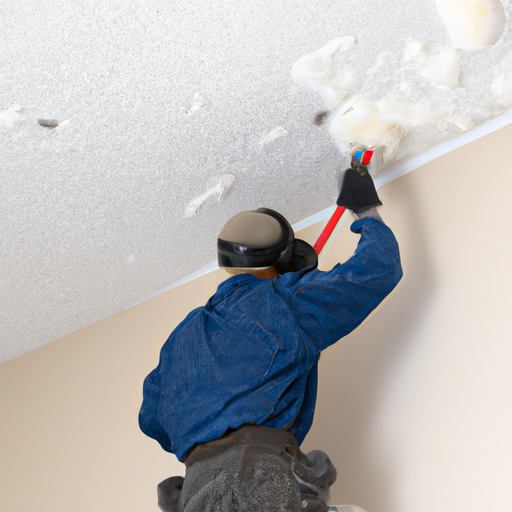
Renovation Challenges: Removing and updating popcorn ceilings in your new home
Although buying a house with a popcorn ceiling can have its advantages, it is important to consider the problems associated with renovation. Popcorn ceilings were a popular choice in the mid-20th century because of their ability to hide imperfections and reduce noise. However, over time, they lost their appeal, and today many homeowners prefer smooth, smooth ceilings.
One of the main difficulties in dealing with popcorn ceiling is the process of removing it. Popcorn ceilings are notorious for being difficult to remove, requiring time, effort, and sometimes professional help. The removal process involves wetting the ceiling, scraping off the texture, and then sanding and finishing it to achieve a clean, modern look. It can be a confusing and time-consuming task that can potentially seriously affect your life situation.
Also, it’s important to know that some popcorn ceilings installed before the 1980s may contain asbestos.
3. Popcorn and Home Value: How It Can Affect Resale Value
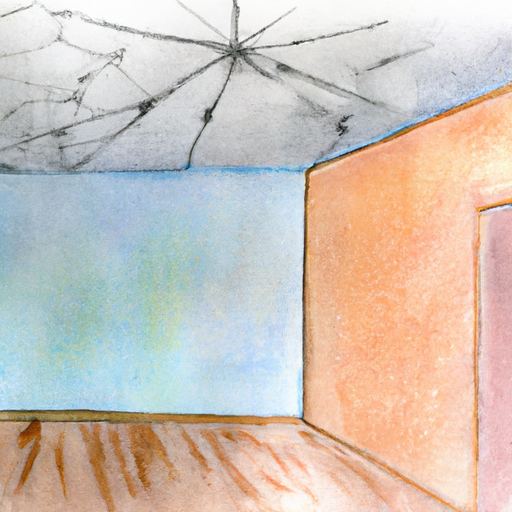
Popcorn ceilings, also known as acoustic ceilings, were a popular design choice in the mid-20th century. However, their popularity has declined over the years, and many homeowners now consider them outdated and unsightly. If you’re considering buying a home with popcorn ceilings, it’s important to understand how they can affect your resale value.
One of the main problems with popcorn ceilings is that they can make a room look dated and less modern. This can turn off potential buyers, especially those looking for a ready-made home. Having popcorn ceilings can make it harder to sell your home in the future because it can limit your pool of interested buyers.
In addition, popcorn ceilings can be more difficult to maintain and clean. Over time, dust, cobwebs and even mold accumulate on them, which is difficult to remove due to the textured surface. This can be a deterrent to potential buyers who may not want it
4. Health Concerns: Potential Risks and Tips for Popcorn Ceiling Maintenance
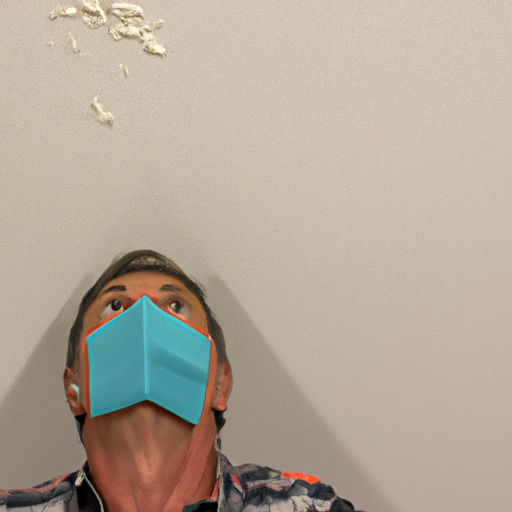
Popcorn ceilings, also known as acoustic or textured ceilings, were a popular choice in homes built between the 1950s and 1980s. While they may have been trendy back then, many homeowners today are faced with the decision of whether or not to buy a home with a popcorn ceiling. One important aspect to consider is the potential health problems associated with these ceilings.
One of the main problems associated with popcorn ceilings is the presence of asbestos. Asbestos is a hazardous material that was widely used in construction until it was banned in the late 1970s due to its association with serious diseases, including lung cancer and mesothelioma. Popcorn ceilings installed before this ban likely contained asbestos. If the ceiling remains intact and intact, asbestos fibers are less likely to become airborne and pose a health hazard. However, any repair work that involves drilling, sanding or scraping the ceiling can release these harmful fibers into the air, making it necessary
5. Alternatives and Solutions: Exploring Popcorn Ceiling Options in Your Dream Home
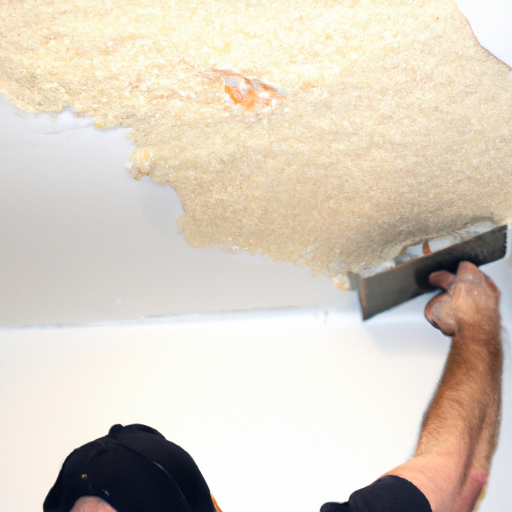
When faced with the decision to purchase a home with a popcorn ceiling, it is important to consider the alternatives and available solutions to address this outdated feature in your dream home. While some may find the textured look charming and unique, others may see it as an eyesore that needs immediate attention. Fortunately, there are a few options worth exploring when it comes to working with popcorn.
1. Removal. One of the most common solutions is to completely remove the popcorn texture. This process involves scraping off the textured material and then applying a new layer of plaster or drywall compound to create a smooth finish. However, it is important to note that popcorn ceilings installed before the 1980s may contain asbestos. In such cases, it is imperative to consult with professionals who can safely carry out the removal process and ensure the health and safety of all residents.
2. Coating: If removing the popcorn texture seems like a daunting task, another option is to coat. This can be done by setting a
In conclusion, whether or not to buy a house with a popcorn ceiling ultimately comes down to your personal preferences and priorities. While there are certain benefits to having a popcorn ceiling, such as soundproofing and concealing flaws, there are also significant disadvantages to consider, including repair issues, potential impact on resale value, and health concerns. It is important to weigh these factors against the overall appeal and value of the home, as well as your own willingness to invest time and money in removing or updating the popcorn ceiling. Ultimately, if you’re willing to take on the challenges and potential risks associated with a popcorn ceiling, there are alternatives and solutions to help you create the home of your dreams.
 Purex find
Purex find